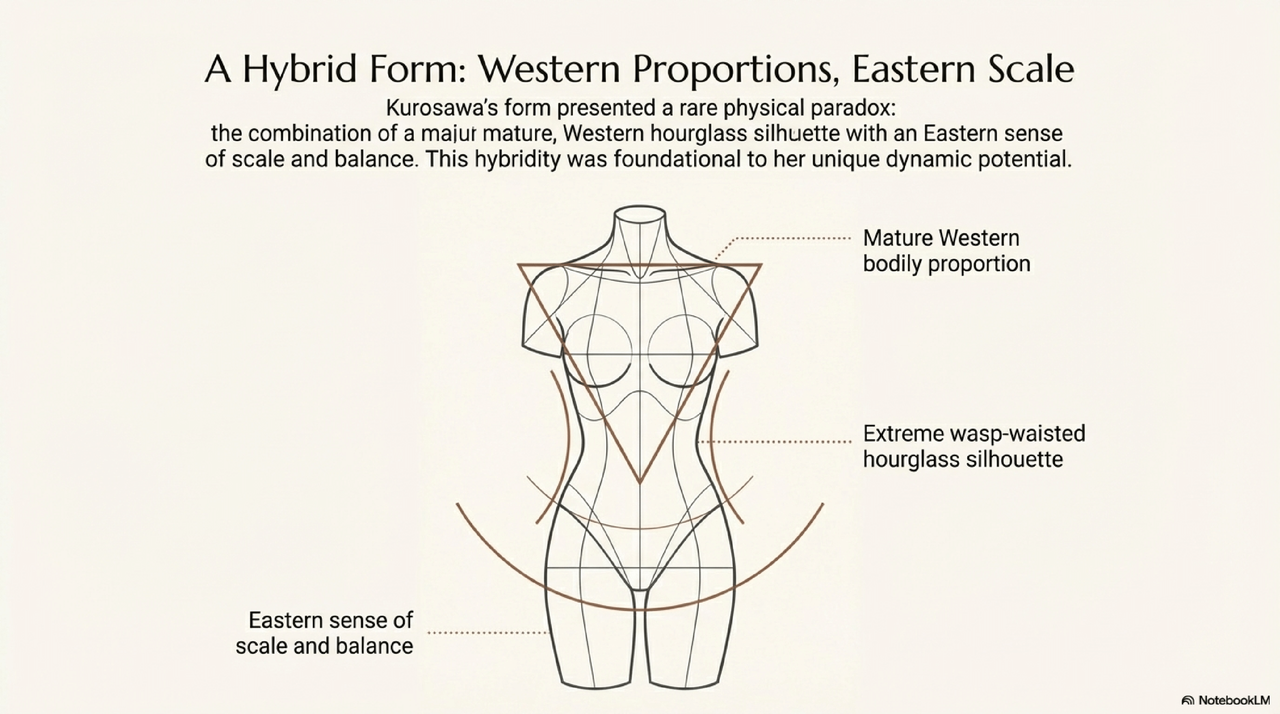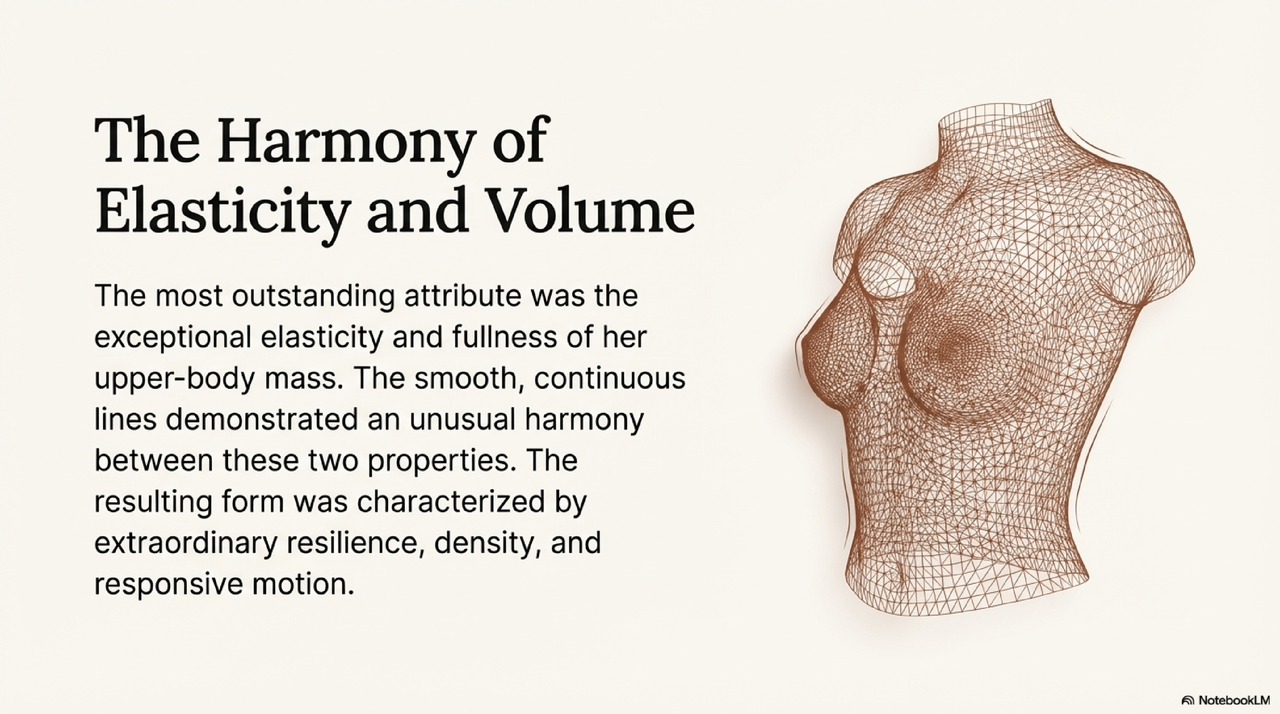Want to join in? Respond to our weekly writing prompts, open to everyone.
Santa Jeopardizes His Relationship with the Air & Space Force, DOJ Investigation Underway
United States Air Force Colonel Barbara Cho, spokesperson for the Pentagon, made a shocking announcement today whether to reconsider their relationship with Santa after allegations of divulging classified information to a group of children during a Zoom meeting.
Stephen Willis, the father of a 14-year old daughter, were both present during the online call. He said during the interview, “It’s crazy. Santa’s face was bright red, his speech slurred, and he ranted that his sleigh was a prototype based on alien technology constructed at Area 51.”
Colonel Cho has denied all allegations of Santa’s sleigh being based on alien technology, that Area 51 exists, and that an alien craft landed on Roswell back in 1947. She referred to Project Blue Book, a decade long plus study that concluded all allegations of alien UFOs have been proven false.
In a final statement, Colonel Cho said, “We take this matter of national security seriously and hope to settle this matter for the sake of our children.”
DOJ spokesperson Assistant U.S. Attorney Michael Ana said that an investigation is underway and wouldn’t comment any further until the investigation is complete. He also said, “We’re also investigating the father, Mr. Willis, why his daughter still believes in Santa Claus.”
Santa declined an interview and has denied all allegations about the matter.
#news #parody #santa #airforce #doj
The MAG weekly Fashion and Lifestyle Blog for the modern African girl by Lydia, every Friday at 1700 hrs. Nr 184 22nd December, 2025
from  M.A.G. blog, signed by Lydia
M.A.G. blog, signed by Lydia
Lydia's Weekly Lifestyle blog is for today's African girl, so no subject is taboo. My purpose is to share things that may interest today's African girl.
This week's contributors: Lydia, Pépé Pépinière, Titi. This week's subjects: Corporate Christmas Chic: The Accra Girl’s Playful Guide to Slaying the Festive Office Season, 2026 Fashion prediction, Wedding rings, and Level Bar and Lounge
Corporate Christmas Chic: The Accra Girl’s Playful Guide to Slaying the Festive Office Season.
Ah, Christmas in Accra — where the harmattan breeze is giving “soft life,” the traffic jams sparkle with fairy lights, and every office turns into a runway for festive corporate slay. If you’ve been wondering how to blend professionalism with a sprinkle of holiday magic, gather round, sis. It’s time to unwrap the corporate Christmas fashion trends taking over Accra this season!
The Christmas-But-Make-It-Corporate Colour Palette: If you think red and green are the only options, think again. The Accra corporate girl is remixing tradition:
Champagne gold blouses tucked into crisp tailored pants.
 Emerald pencil skirts with neutral bodysuits.
Emerald pencil skirts with neutral bodysuits.
 Berry red suits for the daring queen.
Berry red suits for the daring queen.
 Metallic accents here and there because why not? It’s giving glamour without shouting “I’m the office Christmas tree.”
Tip: Harmattan dust + white clothing? Choose wisely. Or carry wipes. You know your enemies.
Ankara… But Festive!
Nobody does Christmas creativity like the Accra fashionista:
Ankara with gold foiling.
Wax prints featuring deep greens, burgundies, or navy.
Metallic accents here and there because why not? It’s giving glamour without shouting “I’m the office Christmas tree.”
Tip: Harmattan dust + white clothing? Choose wisely. Or carry wipes. You know your enemies.
Ankara… But Festive!
Nobody does Christmas creativity like the Accra fashionista:
Ankara with gold foiling.
Wax prints featuring deep greens, burgundies, or navy.
 Subtle shimmer woven into patterns
A dramatic peplum top here, a structured blazer there.
Subtle shimmer woven into patterns
A dramatic peplum top here, a structured blazer there.
 This is the season to let African prints mingle with corporate silhouettes. From Makola to the boardroom, the slay is intentional.
Statement Sleeves With Corporate Discipline:
Puffy sleeves, bishop sleeves, ruffles — the girls are not holding back.
This is the season to let African prints mingle with corporate silhouettes. From Makola to the boardroom, the slay is intentional.
Statement Sleeves With Corporate Discipline:
Puffy sleeves, bishop sleeves, ruffles — the girls are not holding back.
 But of course, we balance it with:
Straight-leg trousers.
But of course, we balance it with:
Straight-leg trousers.
 Midi skirts.
Midi skirts.
 Minimal accessories.
Let the sleeves do the talking while you close deals like the star you are.
Minimal accessories.
Let the sleeves do the talking while you close deals like the star you are.
2026 Fashion prediction. People will change the colour of their hair frequently, at great cost and using all sorts of poisonous chemicals, to suit the colour of the dress they are wearing.
Please mention me to friends when you see it happening.

Wedding rings. We're coming to the end of the year and many of us look at our achievements and failures. I decided to do some cleaning up in my phone. And found that almost 6 years ago Covid started in Ghana and the rest of the world. Memories of the lockdown, most of us lost some friends, the security guys at the supermarkets became all powerful and measured your temperature (they didn’t but anyway they pointed something at you) and it was legal to enter a bank with a mask on your face. And worldwide discussions about vaccines which are still ongoing today, and some claim it never happened, that it was just something like a common cold. Meanwhile the West tried to keep the show going by injecting monies into airlines that were not flying and restaurants which were closed, and today we have not yet solved the problem of how to get that money back and one can say that the world is in a recession of which the end has not yet been seen. As a safe haven people now put their money into Gold which's price has skyrocketed so that the average person cannot afford a golden wedding ring any more. Covid.

Level Bar and Lounge, Asafoatse Tempong Street, Kuku Hill Crescent Osu, Accra. It’s in the same street as the Republic Bar. We went there to scout the place, next evening Accra Fashion Week @ 25 was to have an event there, and I wanted to be sure I could find the place. The interior is worth going for, and it is big, you can be out or in. We were there on a Tuesday evening around 9 pm, and were the only customers. In that big place.
 They only have the QR code menu, I don’t like that, unfortunately you see it more and more. I told my guest to make a second choice because I expected most of the things on the menu not to be there. But to my surprise all went well, the service was good, we had Chicken Marocain with couscous, nice and different, seafood fried rice which was nice, and shrimp tempura which I will come back for. Prices are reasonable, but bring change, they don’t have it, next evening again they had no change. This is one of the things HE John Dramani Mahama was talking about, poor customer service, and not having change is an endemic one. If you are the owner and you see you have no change you go to the bank in the morning and get change.
You’re supposed to bank your earnings from last night anyway.
They only have the QR code menu, I don’t like that, unfortunately you see it more and more. I told my guest to make a second choice because I expected most of the things on the menu not to be there. But to my surprise all went well, the service was good, we had Chicken Marocain with couscous, nice and different, seafood fried rice which was nice, and shrimp tempura which I will come back for. Prices are reasonable, but bring change, they don’t have it, next evening again they had no change. This is one of the things HE John Dramani Mahama was talking about, poor customer service, and not having change is an endemic one. If you are the owner and you see you have no change you go to the bank in the morning and get change.
You’re supposed to bank your earnings from last night anyway.

Lydia...
Do not forget to hit the subscribe button and confirm in your email inbox to get notified about our posts.
I have received requests about leaving comments/replies. For security and privacy reasons my blog is not associated with major media giants like Facebook or Twitter. I am talking with the host about a solution. for the time being, you can mail me at wunimi@proton.me
I accept invitations and payments to write about certain products or events, things, and people, but I may refuse to accept and if my comments are negative then that's what I will publish, despite your payment. This is not a political newsletter. I do not discriminate on any basis whatsoever.
§125 “I will have to find some theory about fiction … My brain might not last me out”
from Skinny Dipping
[22.xii.25.b : lundi / 7 December] to find (in this case) is not a matter of chance, but of formulation … after a period of reading, meditation, prayer, composition, and contemplation : just at the point where the growth of my private library has been limited by material concerns, that is the moment when the ship can drop anchor, I can suit up, and prepare myself for a descent in the abysses. Fiction is an ethical expression, a way of living in the world, distinct from the strictures of realism. Fiction is the world in which we practice the art of escape, but not escape from, but an escape into the innermost, the highest. Just as I don’t need anyone to witness my reading, my meditation, my prayer, my contemplation, I don’t need anyone to witness my composition : but when taken altogether, the object is to reach a reader, to make contact : the symbols work both ways. When the Parson says, “Contact has been made,” he could be speaking for the Zebrafish and not on behalf of the Nucleus of the Swarm. What the Story shows is the defeat of “I see evil everywhere”. Some call it surrealism, but it’s good old fashion true fiction.
It’s funny thinking about V.W.’s anxieties, concerning the value of her work, I mean. Looking back … who knows what the future holds? V.W. writes:
“Robert Bridges likes Mrs Dalloway: says no one will read it; but it is beautifully written, & some more…”
better to be beautifully written than to be read … still it’s worth reading, esp. in that beautiful annotated edition.
Here’s the beginning of V.W.’s theory about fiction: “I don’t think it is a matter of ‘development’ but something to do with prose & poetry, in novels … Reality [is] something … put in at different distances … One would have to go into conventions; real life; & so on. … And death—as I always feel—hurrying near. 43: how many more books?”
I take “development” here to be progress in the sense of new approaches, new techniques … like what scientists & technologists are always going on about, what’s new! coz new sells. Just read Don Quixote. That could have been written yesterday. Not that I don’t think Anaïs Nin’s critique of the novel, her desire for a novel of the future, is on point. Novels are just a concept. Why should we buy their distinction between prose & poetry? Why is this not a poem? Is it that the one with the largest collection of the tiniest boxes wins? What kind of game is that? Not to mention the strain on the eyes.
Death. Death? Where is your … ding! time’s up!
Keep the books comin’ I say.
They called me the Ice Queen:
a framework of discarded beauty
hung on a battered shape
with firmness of flesh & blue of eye
the formidable manner has gone
the sun coming out
having had my cry
now, to write
a list of Christmas presents
Evil as the lesser aim
from celestialboon
Good and evil are very powerful concepts, and they can slot themselves very eagerly at the centre of anyone's system of ethics, making them profoundly important to have a good grasp on. Generally most people's view of ethics aligns with either the solid absolutism of divine command (the way eg. of Abrahamic religions), or similar universalism (see: Kantian ethics), while a different take (eg. postmodern ethics) poses a more fundamental relativity to ethics, which necessarily take different faces with different cultures or even with different individuals. While I'm generally supportive of a position of ethical relativism, in itself it is a vacuous take, and it requires more nuance, or at least some heuristic model, for actually orienting ourselves in the daily life. In the interest of providing one, I'll take the long view.
We start out with simple matter: plasma was one of the first products of the Big Bang, its mere existence a miracle compared to what preceded it—nonexistence. Something from nothing. Being instead of non-being. And yet, such conditions of extremely hot and disordered matter are antithetical to all earthly life, and even after the cooling down it would become mere inanimated matter, the existential baseline that we call death. A miracle of miracles at the time, and yet things have moved so much further from there.
Eventually Earth developed life on it, starting with the unicellular being, capable of the basic life functions of eating, reproducing, and spreading. And its uncontrolled and global spread meant that Earth finally managed to get colonized by life! If such a thing happened today, such an overbearing spread would be called a plague.
After life on Earth got its wish to widely exist fulfilled, it then moved on to grander aims: no longer to merely exist, but to coexist! Life diversified, single cells gathered together to live as one greater whole, more complex beings emerged time after time, and more complex systems and ecosystems with them. Driven by the external factors like survival, competition and efficiency, life ever grew more complex, more organized, more interwoven. Across countless species, life on Earth self-organized not just to propagate but to regulate themselves and other life forms around them and the system as a whole (like lichens slowly turning stone into living matter, plants anchoring the earth to prevent landslides, or beavers slowing down the waters' flow to create widely accessible wetlands).
And all throughout, the old has not been subsumed: matter remains the foundation of existence. Unicellular beings remain the most prolific on Earth. Every next phase builds upon the last, not replacing but integrating. However hard-won, each piece of progress brings a greater, more complex harmony, taking the existing voices and weaving them into yet more intricate compositions. Notes into chords, and chords into symphonies.
As humans, we have picked up the very same torch—we call it by names like evolution, progress, advancement—and we've added layers of our own to the system, one after the other. We can see the same patterns at play in our technological advancements: each technology has empowered us to live in a more complex and refined way, and it has also in turn allowed us to achieve a yet further advancement, previously out of reach.
And each time this happens, we see the previous achievements as crude, wasteful, obsolete. The first car was steam-powered! Imagine the scene it would cause to stroll atop one on modern streets.

What we eg. understand nowadays as an universal good (access to internet) was not just unachievable, but unthinkable a mere 100 years ago. As times changed, we've adjusted our lifestyle, and with it our expectations and our dreams both. We change what we think is reasonable, and we change what we dream of to move yet further.
And this is recognizable as a fundamental quality of existence—we do not only merely live, but we reach for more. In Tarot, it is the fundament, the card zero: The Fool. Some term it the unstoppable march of progress, some the indomitable human spirit. Terence McKenna put it as the Universe's inexhaustible search for novelty, acting as a universal attractor towards some future point/state of being. This force we recognize as common to all of us, in our capacity to wish, to dream, to want, to pursue.
But, even though as we can be said to move in a single general direction, as much as we possess one broadly common goal, the process is still not obvious, and it doesn't happen all at once. Progress/evolution is a careful and gradual coaxing of the future out of time, and it happens piece by piece. Leonardo da Vinci dreamt of the helicopter, but only in the XX century did we become able to bring the technology to actually etch the dream into the concreteness of matter.
Not all dreams are suited to all times; life was unachievable shortly after the Big Bang. Same-day shipping of global products was a hard sell at the time of horse-drawn carriages. Each goal must be filtered through the bottleneck of present reality and tested through the limitations of current space-time. To the forward force of progress is paired its necessary nemesis: the attrition of present circumstances. This takes on many forms, such as material possibilities, tradition, conservativism, fear for the future, and the inertia present in both matter and souls.
This is a necessary counterbalance, for dreams can be excessive; they can be anachronistic; they can be misshapen. Or, they can be taken not seriously enough, for to condense a dream into reality is hard, long and laborious work. Dreams can be overvalued and they can be underestimated, and each of these situations makes them dangerous, for to bring an unfit dream forward is an act of violence, that takes apart the past to build something worse in its place. To pursue change for its own sake is mere disruption, and I bet most people in the tech space have gotten sick of the term by now. The forward march of progress is more like a game of attack and defense, a counterbalance between the impetus for the new-or-different and the resistance to change, which in its healthy functioning serves as a filter for worthy dreams.
As progress draws on, some dreams become too obsolete, too small to count as actual progress. To make an example of this, we can look at the modern economy. To chase the dream of individual profit and personal power, some people have ammassed power unto themselves, and used this power to make it easier for them to ammass more power, in an upwards spiral that reached modern heights of entire branches of present-day economy being dominated by monopolies, or more commonly organized oligopolies, where they are the only game in town and they have the power to keep that being the case, and such they decide their product quality not based on what can be done for the customer, but what the customer will not reject; and their prices not based on the manufacturing cost, but based on how much can be extorted out of each buyer. This has generated a global malaise that we all recognize, out of a dream that we can understand being unfit for our times.
Some dreams are too small for a circustance, and some are too big, and both are, in that moment, to be discarded. Good and evil, as such, become a matter not of what must be achieved but what can be achieved. Which, at the end of the day, is one of the most obvious moral concepts, that of doing one's best; however, it must be guided by the presence of mind that is able to tease apart the Possible in each singular circumstance. As it is called sometimes, such presence is the practice of truth seeking.
The propelling force behind the forward push for progress is the force for integration, for weaving parts into a coherent whole, pieces into a new machine, to order sounds into music, libraries into a tech stack, individuals into a community, a union, a family, a collective, a movement. “When two or three are gathered in my name, there I am,” where that “I am” was not about the man but the essence of the man: the common cause, the harmonizing factor; the divine amongst beings, resulting by the mere coherence of intent.
To bring about this further integration is the work of our highest faculties: consciousness, creativity, imagination and love; and it is a work that is always going on and never finished.
A Trip With No Revelation || 22 dec
from  Notes I Won’t Reread
Notes I Won’t Reread
I disappeared for two days. Not in a dramatic way. No mystery. No blood. Just Abu Dhabi.
Apparently, when you don’t go out for a while, your friends decide to drag you across an emirate as if fresh air might reboot your personality. The plan was the Zayed National Museum. It didn’t work out, because plans rarely do. So we went to the Zayed Festival instead.
lights, noise, so much noise. too much people, We stayed until midnight, which already felt like a small act of rebellion against my usual habits.
They told me to sleep over. “Then tomorrow we go somewhere else, then we drive back to Dubai.” That sentence had no clear meaning, but I agreed anyway. Tired people agree to stupid things.
The night passed. Nothing poetic happened. Just sleep. Disappointing, I know.
The next day we went to the Natural History Museum. Finally, something that made sense. Animals. Bones. Creatures that lived, survived, and died without pretending to be interesting on social media. I liked that. Animals don’t lie. They don’t explain themselves. They just exist, eat, kill, sleep, repeat. Efficient. Honest. Relatable. I didn’t write during those two days. Not because I was busy discovering myself or whatever people say. I just didn’t feel like turning moments into sentences. Sometimes living is enough, and sometimes it’s just living.
After that, I drove back to Dubai. Home. Same roads. Same thoughts. Same quiet that follows you no matter how far you drive.
I’ll write about it properly later. Or I won’t. Not everything needs to be meaningful to be remembered.
Sincerely,
still unimpressed,
Ahmed
Toje gir Trump (nok) en hånd
from eivindtraedal
Asle Toje har fått en slags nasjonalkonservativ nyttårstale på trykk i Aftenposten, som fortjener et godt tilsvar. Trump-administrasjonen hevder at Europa står overfor “sivilisasjonskollaps” på grunn av innvandring og diverse “indre fiender”. En påstand de færreste europeere og nordmenn vil si seg enig i. Men Toje er ikke så sikker. “Har de rett?” spør han retorisk i innledningen, og resten av teksten er et dårlig innpakket og svulstig “ja”.
Inne i denne reaksjonære tåkeheimen av en tekst finner vi odiøse fraser som “Når individualisme settes over fellesskapet, nytelsen over forpliktelsen, tømmes samfunnet for samhold”, “kjærlighet til fedrelandet (...) er en plikt” og “en nasjon er et skjebnefellesskap”. Dette skjebnefellesskapet er truet av “selvopptatte minoriteter” og “eliter som synes å ha glemt hvem de representerer”.
“Spørsmålet er ikke hva som truer oss utenfra”, hevder Toje, mens Putin truer i øst og Trump truer i vest. Virkelig? Hvordan kan det IKKE være spørsmålet, mens Europa jobber på spreng for å ruste opp mot Russland i fraværet av en troverdig sikkerhetsgaranti fra USA, og USAs president nok en gang signaliserer at han vil annektere Grønland? Skal vi møte denne trusselen med å pirke i navleloet og dyrke nasjonalkonservative idealer fra obskure filosofer fra slutte av 1800-tallet?
Hvem andre er det som vil at vi skal vende blikket innover, mistro våre “illegitime” eliter og gjøre nasjonale minoriteter til syndebukker? Jo, det er jo de selvsamme herrer Putin og Trump. Om vi skal tro USAs nye sikkerhetsstrategi er amerikansk utenrikstjeneste klare for å slutte rekkene med russisk etterretning for å styrke isolasjonistiske, reaksjonære og autoritære krefter i Europa. Om Trump ikke fikk fredsprisen, får han i alle fall en hjelpende hånd fra komitéens nestleder.
Toje har lenge kritisert Norges støtte til Ukraina, som han ikke oppfatter som “vår kamp”. Han har også vært mer enn forståelsesfull overfor Trump (“ein mench”, i Tojes egne ord). I den grad Norge skal dyrke samhold og være på vakt mot indre fiender om dagen, bør vi nok først og fremst være på vakt mot dem blant oss som forsøker å avlede oppmerksomheten mot de reelle ytre truslene vårt åpne, liberale demokrati nå står overfor. Se mindre
Ai Kurosawa —Ext.Pack
from  hustin.art
hustin.art
This post is NSFW 19+ Adult content. Viewer discretion is advised.
In Connection With This Post: Ai Kurosawa https://hustin.art/ai-kurosawa
Ai Kurosawa boasted a characteristically Japanese, cute yet distinctive face, an extreme wasp-waisted hourglass curve, and voluptuous breasts. She was a rare hybrid actress combining a mature Western silhouette with an Eastern scale. …






Estamos Criando Crianças ou Protegendo os Pais?
from  Olhar Convexo
Olhar Convexo
#Material com Apoio de IA 🤖 #
Estamos criando crianças numa sala acolchoada — e depois fingindo surpresa quando o mundo machuca.
A sala acolchoada
Nunca a infância foi tão protegida, monitorada, filtrada, mediada e higienizada.
E aqui não é proteção no sentido nobre — é amortecimento existencial.
- Frustração virou trauma.
- Tédio virou problema clínico.
- Conflito virou violência.
- Discordância virou ofensa.
Criamos ambientes onde:
- Não se perde (todo mundo ganha medalha).
- Não se erra (erro é “processo”, nunca consequência).
- Não se espera (dopamina imediata, tela, estímulo, recompensa).
- Não se suporta silêncio, desconforto ou limite.
Resultado? Crianças emocionalmente frágeis, hiperestimuladas e hipotreinadas.
O mundo real (spoiler: ele não é acolchoado)
O mundo:
- Não pede licença.
- Não se adapta ao seu sentimento.
- Não explica tudo.
- Não garante segurança emocional.
- Não valida sua dor antes de te cobrar desempenho.
O mundo cobra competência, tolerância à frustração, resiliência e autonomia.
E ele cobra sem tutorial.
Aí acontece o choque:
“Mas meu filho sempre foi tratado com cuidado…”
Pois é.
O mundo não assina esse contrato.
O paradoxo cruel
Na tentativa de evitar sofrimento, estamos criando adultos que sofrem mais.
Porque:
- Quem nunca caiu não sabe levantar.
- Quem nunca ouviu “não” não sabe negociar.
- Quem nunca falhou não sabe persistir.
- Quem nunca foi contrariado não sabe conviver.
Isso não é teoria — é fisiologia, psicologia, neurodesenvolvimento e, francamente, observação empírica básica.
Mas atenção: não é sobre brutalidade
Aqui vem a parte que muita gente erra (ou finge não entender):
Não é criar crianças duras.
É criar crianças capazes.
Não é negligência.
É exposição progressiva ao real.
- Limite não é violência.
- Frustração não é trauma.
- Responsabilidade não é opressão.
- Autonomia não é abandono.
Acolher não é eliminar o desconforto — é ensinar a atravessá-lo.
O que forma alguém “pronto pro mundo”?
Não é blindagem. É treino.
Crianças prontas pro mundo:
- Sabem lidar com o “não”.
- Sabem esperar.
- Sabem perder.
- Sabem errar sem colapsar.
- Sabem que nem tudo é justo — e seguem em frente mesmo assim.
Isso se constrói com pequenas dores controladas, não com anestesia constante.
Em resumo (sem anestesia):
Estamos criando crianças emocionalmente seguras?
Ou emocionalmente dependentes de amortecimento?
Porque o mundo não vai colocar espuma nas quinas só porque a infância virou uma sala acolchoada.
E a pergunta final — a mais incômoda — é essa:
Estamos protegendo as crianças… ou protegendo os adultos do desconforto de ver crianças sofrerem um pouco para se tornarem fortes?
O Temido Silêncio
from  Olhar Convexo
Olhar Convexo
Conheço muitas pessoas que não conseguem ficar no silêncio.
O motivo? O “silêncio é ensurdecedor”; causador de ansiedade imediata.
Será que é verdade ou essas pessoas estão com medo dos próprios pensamentos?
O que poderia fazer um eco tão ruim nos próprios pensamentos que não se permitem nem ouvir?
Confesso que não compreendo.
Confesso também que estou tentando compreender o motivo da Geração.Com¹ ter tanto medo dos próprios pensamentos e ideias.
Será que isso é verdade mesmo?
Ou essas pessoas têm medo dos próprios pensamentos?
O que existe de tão insuportável dentro da própria mente que não pode ser ouvido sem a necessidade de um som de fundo? Sem uma tela acesa? Sem uma notificação piscando?
Confesso: não compreendo.
Confesso também que tento entender por que a Geração.Com¹ demonstra tanto medo/ansiedade das próprias ideias.
O silêncio, para eles, não é um espaço fértil de criatividade; parece ser um vácuo hostil, quase uma ameaça.
Onde não há estímulo, surge a angústia?! Onde não há distração, nasce um desconforto de existir consigo mesmo?!
O silêncio, quando surge, denuncia.
Ele revela ansiedade não tratada.
É um paradoxo cruel: nunca foi tão fácil falar, postar, opinar – e nunca foi tão difícil pensar de verdade.
Talvez o problema nunca tenha sido o silêncio.
(1) Geração.Com é a geração que nasceu depois dos anos 2000.
An offer
from An Open Letter
We made an offer on the house. I’m so incredibly privileged, I can’t stop thinking about that. It almost feels like I’m not allowed to be happy about it because of how fortunate I am to have that chance compared to others.
Manifesto
from  Kuir - cultura e inspiração Cuir
Kuir - cultura e inspiração Cuir
🇵🇹 Português [English version bellow]
🎄🔥 Mini-manifesto natalício cuir e descolonial
Não celebramos o Natal. Atravessamo-lo.
Recusamos este ritual anual de normalização afetiva, esta coreografia obrigatória da família nuclear, este calendário colonial que insiste em dizer-nos quando amar, quando perdoar, quando sentar, e sobretudo quem conta como família.
O chamado Natal não é inocente. É uma tecnologia temporal. Uma pedagogia moral. Um dispositivo que disfarça conflito estrutural com luzes, peru e a promessa vazia de harmonia.
Reivindicamos o solstício — apagado, apropriado, rebatizado — como tempo de fratura, não de consenso; de sobrevivência, não de reconciliação forçada; de dissidência, não de maturação normativa.
Não queremos afetos herdáveis, nem mesas genealógicas, nem corpos úteis à reprodução do mundo tal como ele está. Queremos parentescos escolhidos, linhagens interrompidas, e vidas que não pedem desculpa por existir fora do guião.
A dissidência não é uma fase. Não amadurece. Não se resolve. Não espera janeiro para ser legítima.
Este não é um apelo à tolerância. É uma recusa da norma. Uma descolonização do tempo. Uma cuirização do inverno. Uma insistência em existir quando tudo conspira para nos domesticar.
Boas Festas de Inverno. Que sobrevivam ao Natal enquanto dispositivo colonial, familiar e afetivo — e que o próximo ano comece antes que o calendário autorize.
🇬🇧 English
🎄🔥 Queer & Decolonial Winter Manifesto
We do not celebrate Christmas. We endure it. We pass through it.
We refuse this annual ritual of affective normalization, this compulsory choreography of the nuclear family, this colonial calendar that insists on telling us when to love, when to forgive, when to gather, and above all who counts as family.
So-called Christmas is not innocent. It is a temporal technology. A moral pedagogy. A device that masks structural conflict with lights, turkey, and the empty promise of harmony.
We reclaim the solstice — erased, appropriated, renamed — as a time of rupture rather than consensus; of survival rather than forced reconciliation; of dissidence rather than normative maturation.
We do not want inheritable affections, genealogical tables, or bodies made useful for reproducing the world as it is. We want chosen kinships, interrupted lineages, and lives that do not apologize for existing off-script.
Dissidence is not a phase. It does not mature. It does not resolve itself. It does not wait for January to become legitimate.
This is not a call for tolerance. It is a refusal of the norm. A decolonization of time. A queering of winter. An insistence on existing when everything conspires to domesticate us.
Happy Winter Holidays. May you survive Christmas as a colonial, familial, and affective device — and may the new year begin before the calendar grants permission.
Brouillard
from  laska
laska
On ne voit pas à plus de trois arbres, on ne voit plus la vue en haut. Je suis dans un cocon où il n’y a pas de bruit.
Je croise un petit chien chocolat de la taille d’un cocker. Son maître n’est pas (encore) lassé de présenter son chien encore bébé.
Je dérange quelques merles. Pas d’autre rencontre sauvage aujourd’hui, dimanche c’est plus le jour des humains que des animaux.
A bit of print
from  Happy Duck Art
Happy Duck Art
Found out today that my hand – which went through carpel tunnel release back in August – still isn’t up to lino carving full time. I’m bummed about that. So, a story:
I put a bunch of time and effort into a carving that had text on it. I’m not particularly experienced with printmaking, and the text was small enough that it involved some fine carving-out of the space in the center. I worked for days getting it all carved – was super proud of myself. The lines were looking clean, and I ran a test print to see if I needed any adjusting.
a better worlb is possible.
I got the design transferred to a new block today.
"The Scion's Last Monologue"
from  hustin.art
hustin.art
The studio backlot stank of fake blood and desperation as I flubbed the incantation—again. “Cut!” roared Director Carmichael, his cigar stub trembling like an epileptic divining rod. My co-star Ryder smirked, adjusting his prop sword with that infuriating I-trained-at-Julliard flair. “Maybe try acting next time?” he whispered. The enchanted spotlight above us pulsed—an actual goddamn will-o'-the-wisp they'd rented from Prague. I wiped my palms on the doublet. One more take. The script's eldritch runes shimmered. The wisp screamed. Ryder's perfect hair caught fire. Carmichael dropped his cigar. “No,” I corrected, stepping over the burning diva, “method acting.”
Why's It Always Have to Be Snakes?
from Nerd for Hire
I'm in the finishing touches stage of putting together a cryptid guidebook, a project that's been downright fun on a bun to put together. In this particular book I limited my focus to cryptids from Appalachia, an area with a high concentration of critters lurking high up in the mountains, deep in the woods, or down in the hollers. And as much as I knew about local cryptids before I started this research, there were still some surprises along the way. One of them, for me, was the number of serpentine or snake-like creatures, and not just down south where things stay tolerable for large reptiles all year. Even up in New York, Pennsylvania, and Ohio, they have reptilian monsters with recurring sightings year after year.
Now, I know—reptiles can survive in northern Appalachia, which has plenty of snakes and turtles that call it home, along with amphibians like frogs and salamanders. But large reptilian predators tend to stick to warmer climates, especially the types of predators sometimes reported in northern Appalachia's lakes and rivers. Of course, that type of thing has never been a concern for mythological creatures. Norse mythology prominently features a serpent, after all, and that comes from another landscape where reptiles aren't exactly happy in the winter. Really, the prevalence of serpent-like monsters in Appalachia is refective of a much larger pattern. No matter the origin of the folklore or mythology, odds are, it has a snake.
Which naturally made me wonder just why snakes—specifically giant snakes—are so universal. I did a post on the prevalence of dragons a little while back, and I think some of those same explanations could probably apply here. Massive snakes could be attempts to explain discovered dinosaur bones or a record of encounters with now-exctinct species. While that could be the source of their appearance, though, the core role of snakes in many cultures' perceptions of the world, and the meaning assigned to them, goes well beyond this idea.
The snakes that started everything
Many mythologies include one or more primordial creatures, beings that existed before humanity—and often even before the gods who created humanity. Their fate typically falls into two camps. One group are killed in process of creating the world (frequently so their body can be used to form the landscape), while the other continue to live on, either asleep underneath the earth or in some way supporting the earth or the universe. The legends of beasties in this latter group may include an prophecy that the beast will someday wake up and cause all kinds of havoc, potentially up to and including the end of the world as we know it.
And you've probably guessed by now the reason I'm bringing this up: a lot of these creatures are snakes. To give a non-exhaustive list of examples, some of these include:
- Ayida-Weddo – the “Rainbow Serpent” of the Fon people of Benin that was also adopted into Vodou, which helped creator goddess Mawu-Lisa shape the world and now coils under the world to keep it from collapsing. Earthquakes are caused by its movements, and it's said that someday it will eat its own tail, causing the Earth to sink into the abyss
- Andndayin oj – the Armenian “Abyssal Serpent” that lives in the black waters around the world tree
- Antaboga – The first being that existed in the mythology of Java in Indonesia. It created the world turtle that all other life sprang from, along with Dewi Sri, the rice goddess
- Bobbi-Bobbi – a sea serpent Dreamtime ancestor for the Binbinga people of Australia, who created bats for them to hunt and gave them boomerangs to hunt with
- Naga Padoha – giant serpent from the mythology of the Batak of Sumatra who guards the underworld. The goddess Sideak Parujar created the world on his back, and earthquakes happen when he struggles
- Pakhangba – powerful serpentine god of the Meitei in India, considered the ultimate ancestor as the father of the seven dragon ancestors of the Meitei clans
- Shesha – or Ananta, the king of the nagas in Hindu mythology, who holds the entire universe on the hoods of his many heads
- Ungud – snake god from the Wunambal people of Australia, who lived underground at the start of the world and helped the sky deity Wallanganda to create life through their dreams
- Unhcegila – Lakota and Dakota horned serpent who flooded the land when she emerged from the primordial waters, the proceeded to terrorize early humans until a warrior finally slays her, leaving her body to form the rocks of the Badlands
...and there are more that follow in a similar vein, often in the Rainbow Serpent archetype in Australia and the Horned Serpent model in American myths. To be fair, snakes certainly aren't the only animals to be given this status; turtles and birds are other recurring figures in this role. But snakes were commonly seen as embodying a kind of primordial force, even beyond the examples given here. The ancient Greeks, for instance, saw snakes as symbolizing an energy that can both create and destroy, and used snakes broadly in their mythology even though, as one scholar put it, snakes played “no meaningful practical role in the lives of the anicent Greeks.”
Scholars often cite some of a snake's unique attributes as the reason behind this. Shedding its skin is a big one. This makes it a logical symbol of renewal, rebirth, and transformation, things that are often heavy themes in mythologies. There's also the fact that snakes slither on the ground. They're connected to the earth, and through it to the ancestors and the underworld. Other snakes can transcend boundaries, moving both in water and on land or climbing trees, giving them a natural place as intermediaries between humans and the sky, water, and earth that are seen as realms of the divine.
Snakes as creators
Another sizeable sub-set of mythological snake figures are those that are portrayed as creators or culture heroes. In part because they seem to contradict some of the prevailing wisdom about where snake monsters in folklore come from. One theory that came up a lot in my research was that giant snakes in folklore represented early humans' fear about encountering poisonous or dangerous snakes in the wild. That makes sense when the snakes are framed as monsters, but doesn't track quite as well to them teaching humans, or even creating them in the first place.
Some examples of mythical creatures in this category include:
- Amaru – double-headed serpent said by the Inca to live at the bottoms of lakes and rivers. Its ability to transcend worlds makes it a conduit for spiritual knowledge
- Awanyu – horned serpent of the Tewa Pueblo who taught humans rituals related to rainfall, which he is said to control
- Degei – the creator god of Fijian mythology, who hatched an egg that produced the first humans
- Fuxi – culture hero with a serpent body in Chinese mythology, seen as the first emperor of China who invented music, cooking, hunting, fishing, and writing
- Kukulkan- the feathered serpent of Maya myth (later reprized by the Aztec as Quetzalcoatl) seen as a mediator between the heavens and earth, and representative of cyclical time
- Nuwa – mother goddess from Chinese mythology who molded humans out of yellow clay. She has the head of a woman with the body of a snake
...and there are certainly more. The snake is also associated as a familiar or symbolic animal with an array of helpful deities, like Wadjet from Egyptian mythology or the Rod of Asclepius from ancient Greece, which is the image of a snake circling a staff that's associated with medicine and healing. That seems particularly counterintuitive, but it again gets back to that idea of snakes as symbols for renewing life. Some alchemists even thought they knew the secret to immortality.
It's also worth noting that even helpful snakes in folklore and mythology often have a dangerous side. Serpent deities are often connected to weather, meaning they can bring helpful rains but also devastating floods. Primordial beings that created the world can also ruin cities with earthquakes just by shifting a coil, or even destroy the earth entirely. The source of that snake around staff imagery used by the Greeks was an older Sumerian god, Ningizzida, who was often depicted as a horned serpent and took a seasonal descent into the underworld to represent the changing seasons. This is another example of the serpent in mythology linked to the earth, which makes it a source of both sustenance and fear.
Snakes as monsters and destroyers
This is the role most modern folk tales cast snakes into, and it's a common one across mythology, too. It's also the one that makes the most logical sense, like I alluded to in the last section. Most humans have an instant fear and/or ick reaction to snakes. Stories about encounters with dangerous snakes are just as prone to the fish-story effect as anything else, with the offending animal getting just a bit bigger with every telling, or the snake's dangerous attributes might get intentionally exaggerated to turn the story into a cautionary tale for kids about why not to mess with the colorful thing making the rattly noise with its tail.
The question of why snakes persist in cold-weather places is probably another one that has two answers. Some could stem from encounters or stories brought back by travelers in warmer landscapes. These kinds of stories would seem particularly fantastic and noteworthy to someone who's used to the more reasonably sized snakes found in temperate climates. The other answer, I think, is that the implausibility of a giant snake in a place like Pennsylvania is part of its appeal. It adds to a being's mystique if it's living somewhere it's not supposed to be. When animals do this, it breaks the rules you know for them, and that makes them seem even more powerful and terrifying.
I suppose, when you stop to think about it, it isn't so strange that snakes are so common in myths and folklore. They live on every continent except antarctica, meaning humans have been living alongside snakes from their earliest days. I suppose it's no wonder they'd work their ways into our stories.
See similar posts:
#Mythology #Cryptids #Folklore
The Creative Education Crisis: When AI Makes Tests Obsolete
from  SmarterArticles
SmarterArticles

When 92 per cent of students admit they're using AI to complete assignments, and 88 per cent have used generative tools to explain concepts, summarise articles, or directly generate text for their work, according to the UK's Higher Education Policy Institute, educators face an uncomfortable truth. The traditional markers of academic achievement (the well-crafted essay, the meticulously researched paper, the thoughtfully designed project) can now be produced by algorithms in seconds. This reality forces a fundamental question: what should we actually be teaching, and more importantly, how do we prove that students possess genuine creative and conceptual capabilities rather than mere technical facility with AI tools?
The erosion of authenticity in education represents more than a cheating scandal or a technological disruption. It signals the collapse of assessment systems built for a pre-AI world, where the act of production itself demonstrated competence. When assignments prioritise formulaic tasks over creative thinking, students lose connection to their own voices and capabilities. Curricula focused on soon-to-be-obsolete skills fail to inspire genuine curiosity or intellectual engagement, creating environments where shortcuts become attractive not because students are lazy, but because the work itself holds no meaning.
Yet paradoxically, this crisis creates opportunity. As philosopher John Dewey argued, genuine education begins with curiosity leading to reflective thinking. Dewey, widely recognised as the father of progressive education, emphasised learning through direct experience rather than passive absorption of information. This approach suggests that education should be an interactive process, deeply connected to real-life situations, and aimed at preparing individuals to participate fully in democratic society. By engaging students in hands-on activities that require critical thinking and problem-solving, Dewey believed education could foster deeper understanding and practical application of knowledge.
Business schools, design programmes, and innovative educators now leverage AI not merely as a tool for efficiency but as a catalyst for human creativity. The question transforms from “how do we prevent AI use?” to “how do we cultivate creative thinking that AI cannot replicate?”
Reframing AI as Creative Partner
At the MIT Media Lab, researchers have developed what they call a “Creative AI” curriculum specifically designed to teach middle school students about generative machine learning techniques. Rather than treating AI as a threat to authentic learning, the curriculum frames it as an exploration of creativity itself, such that children's creative and imaginative capabilities can be enhanced by innovative technologies. Students explore neural networks and generative adversarial networks across various media forms (text, images, music, videos), learning to partner with machines in creative expression.
The approach builds on the constructionist tradition, pioneered by Seymour Papert and advanced by Mitchel Resnick, who leads the MIT Media Lab's Lifelong Kindergarten group. Resnick, the LEGO Papert Professor of Learning Research, argues in his book Lifelong Kindergarten that the rest of education should adopt kindergarten's playful, project-based approach. His research group developed Scratch, the world's leading coding platform for children, and recently launched OctoStudio, a mobile coding app. The Lifelong Kindergarten philosophy centres on the Creative Learning Spiral: imagine, create, play, share, reflect, and imagine again.
This iterative methodology directly addresses the challenge of teaching creativity in the AI age. Students engage in active construction, combining academic lessons with hands-on projects that inspire them to be active, informed, and creative users and designers of AI. Crucially, students practice computational action, designing projects to help others and their community, which encourages creativity, critical thinking, and empathy as they reflect on the ethical and societal impact of their designs.
According to Adobe's “Creativity with AI in Education 2025 Report,” which surveyed 2,801 educators in the US and UK, 91 per cent observe enhanced learning when students utilise creative AI. More tellingly, as educators incorporate creative thinking activities into classrooms, they observe notable increases in other academic outcomes and cognitive skill development, including critical thinking, knowledge retention, engagement, and resilience.
Scaffolding AI-Enhanced Creativity
The integration of generative AI into design thinking curricula reveals how educational scaffolding can amplify rather than replace human judgement. Research published in the Journal of University Teaching and Learning Practice employed thematic analysis to examine how design students engage with AI tools. Four key themes emerged: perceived benefits (enhanced creativity and accessibility), ethical concerns (bias and authorship ambiguity), hesitance and acceptance (evolution from scepticism to strategic adoption), and critical validation (development of epistemic vigilance).
Sentiment analysis showed 86 per cent positive responses to AI integration, though ethical concerns generated significant negative sentiment at 62 per cent. This tension represents precisely the kind of critical thinking educators should cultivate. The study concluded that generative AI, when pedagogically scaffolded, augments rather than replaces human judgement.
At Stanford, the d.school has updated its Design Thinking Bootcamp to incorporate AI elements whilst maintaining focus on human-centred design principles. The approach, grounded in Understanding by Design (backward design), starts by identifying what learners should know, understand, or be able to do by the end of the learning experience, then works backwards to design activities that develop those capabilities.
MIT Sloan has augmented this framework to create “AI-resilient learning design.” Key steps include reviewing students' backgrounds, goals, and likely interactions with generative AI, then identifying what students should accomplish given AI's capabilities. This isn't about preventing AI use, but rather about designing learning experiences where AI becomes a tool for deeper exploration rather than a shortcut to superficial completion.
The approach recognises a crucial distinction: leading for proficiency versus leading for creativity. Daniel Coyle's research contrasts environments optimised for consistent task-based execution with those designed to discover and build original ideas. Creative teams must understand that failure isn't just possible but necessary. Every failure becomes an opportunity to reframe either the problem or the solution, progressively homing in on more refined approaches.
Collaborative Learning and AI-Enhanced Peer Feedback
The rise of AI tools has transformed collaborative learning, creating new possibilities for peer feedback and collective creativity. Research published in the International Journal of Educational Technology in Higher Education examined the effects of generative AI tools (including ChatGPT, Midjourney, and Runway) on university students' collaborative problem-solving skills and team creativity performance in digital storytelling creation. The use of multiple generative AI tools facilitated a wide range of interactions, fostered dynamic and multi-way communication during the co-creation process, promoting effective teamwork and problem-solving.
Crucially, the interaction with ChatGPT played a central role in fostering creative storytelling by helping students generate diverse and innovative solutions not as readily achievable in traditional group settings. This finding challenges assumptions that AI might diminish collaboration; instead, when properly integrated, it enhances collective creative capacity.
AI-driven tools can augment collaboration and peer feedback in literacy tasks through features such as machine learning, natural language processing, and sentiment analysis. These technologies make collaborative literacy learning more engaging, equitable, and productive. Creating AI-supported peer feedback loops (structuring opportunities for students to review each other's work with AI guidance) teaches them to give constructive feedback whilst reinforcing concepts.
Recent research has operationalised shared metacognition using four indicators: collaborative reflection with AI tools, shared problem-solving strategies supported by AI, group regulation of tasks through AI, and peer feedback on the use of AI for collaborative learning. With AI-driven collaboration platforms, students can engage in joint problem-solving, reflect on contributions, and collectively adjust their learning strategies.
The synergy between AI tutoring and collaborative activities amplifies learning outcomes compared to either approach alone. This creates a powerful learning environment addressing both personalisation and collaboration needs. Collaborative creativity is facilitated by AI, which supports group projects and peer interactions, fostering a sense of community and collective problem-solving that enhances creative outcomes.
Authentic Assessment of Creative Thinking
The rise of AI tools fundamentally disrupts traditional assessment. When a machine can generate essays, solve complex problems, and even mimic creative writing, educators must ask: what skills should we assess, and how do we evaluate learning in a world where AI can perform tasks once thought uniquely human? This has led to arguments that assessment must shift from measuring rote knowledge to promoting and evaluating higher-order thinking, creativity, and ethical reasoning.
Enter authentic assessment, which involves the application of real-world tasks to evaluate students' knowledge, skills, and attitudes in ways that replicate actual situations where those competencies would be utilised. According to systematic reviews, three key features define this approach: realism (a genuine context framing the task), cognitive challenge (creative application of knowledge to novel contexts), and holistic evaluation (examining multiple dimensions of activity).
The Association of American Colleges and Universities has developed VALUE (Valid Assessment of Learning in Undergraduate Education) rubrics that provide frameworks for assessing creative thinking. Their definition positions creative thinking as “both the capacity to combine or synthesise existing ideas, images, or expertise in original ways and the experience of thinking, reacting, and working in an imaginative way characterised by a high degree of innovation, divergent thinking, and risk taking.”
The VALUE rubric can assess research papers, lab reports, musical compositions, mathematical equations, prototype designs, or reflective pieces. This breadth matters enormously in the AI age, because it shifts assessment from product to process, from output to thinking.
Alternative rubric frameworks reinforce this process orientation. EdLeader21's assessment rubric targets six dispositions: idea generation, idea design and refinement, openness and courage to explore, working creatively with others, creative production and innovation, and self-regulation and reflection. The Centre for Real-World Learning at the University of Winchester organises assessment like a dartboard, with five dispositions (inquisitive, persistent, imaginative, collaborative, disciplined) each assessed for breadth, depth, and strength.
Educational researcher Susan Brookhart has developed creativity rubrics describing four levels (very creative, creative, ordinary/routine, and imitative) across four areas: variety of ideas, variety of sources, novelty of idea combinations, and novelty of communication. Crucially, she argues that rubrics should privilege process over outcome, assessing not just the final product but the thinking that generated it.
OECD Framework for Creative and Critical Thinking Assessment
The Organisation for Economic Co-operation and Development has developed a comprehensive framework for fostering and assessing creativity and critical thinking skills in higher education across member countries. The OECD Centre for Educational Research and Innovation reviews existing policies and practices relating to assessment of students' creativity and critical thinking skills, revealing a significant gap: whilst creativity and critical thinking are largely emphasised in policy orientations and qualification standards governing higher education in many countries, these skills are sparsely integrated into dimensions of centralised assessments administered at the system level.
The OECD, UNESCO, and the Global Institute of Creative Thinking co-organised the Creativity in Education Summit 2024 on “Empowering Creativity in Education via Practical Resources” to address the critical role of creativity in shaping the future of education. This international collaboration underscores the global recognition that creative thinking cannot remain a peripheral concern but must become central to educational assessment and certification.
Research confirms the importance of participatory and collaborative methodologies, such as problem-based learning or project-based learning, to encourage confrontation of ideas and evaluation of arguments. However, these initiatives require an institutional environment that values inquiry and debate, along with teachers prepared to guide and provide feedback on complex reasoning processes.
In Finland, multidisciplinary modules in higher education promote methods such as project-based learning and design thinking, which have been proven to enhance students' creative competencies tremendously. In the United States, institutions like Stanford's d.school increasingly emphasise hands-on innovation and interdisciplinary collaboration. These examples demonstrate practical implementation of creativity-centred pedagogy at institutional scale.
Recent research published in February 2025 addresses critical thinking skill assessment in management education using Robert H. Ennis' well-known list of critical thinking abilities to identify assessable components in student work. The methodological framework offers a way of assessing evidence of five representative categories pertaining to critical thinking in a business context, providing educators with concrete tools for evaluation.
The Science of Creativity Assessment
For over five decades, the Torrance Tests of Creative Thinking (TTCT) have provided the most widely used and extensively validated instrument for measuring creative potential. Developed by E. Paul Torrance in 1966 and renormed four times (1974, 1984, 1990, 1998), the TTCT has been translated into more than 35 languages and remains the most referenced creativity test globally.
The TTCT measures divergent thinking through tasks like the Alternative Uses Test, where participants list as many different uses as possible for a common object. Responses are scored on multiple dimensions: fluency (total number of interpretable, meaningful, relevant ideas), flexibility (number of different categories of responses), originality (statistical rarity of responses), elaboration (amount of detail), and resistance to premature closure (psychological openness).
Longitudinal research demonstrates the TTCT's impressive predictive validity. A 22-year follow-up study showed that all fluency, flexibility, and originality scores had significant predictive validity coefficients ranging from 0.34 to 0.48, larger than intelligence, high school achievement, or peer nominations (0.09 to 0.37). A 40-year follow-up found that originality, flexibility, IQ, and the general creative index were the best predictors of later achievement. A 50-year follow-up demonstrated that both individual and composite TTCT scores predicted personal achievement even half a century later.
Research by Jonathan Plucker reanalysed Torrance's data and found that childhood divergent thinking test scores were better predictors of adult creative accomplishments than traditional intelligence measures. This finding should fundamentally reshape educational priorities.
However, creativity assessment faces legitimate challenges. Psychologist Keith Sawyer wrote that “after over 50 years of divergent thinking test study, the consensus among creativity researchers is that they aren't valid measures of real-world creativity.” Critics note that scores from different creativity tests correlate weakly with each other. The timed, artificial tasks may not reflect real-world creativity, which often requires incubation, collaboration, and deep domain knowledge.
This criticism has prompted researchers to explore AI-assisted creativity assessment. Recent studies use generative AI models to evaluate flexibility and originality in divergent thinking tasks. A systematic review of 129 peer-reviewed journal articles (2014 to 2023) examined how AI, especially generative AI, supports feedback mechanisms and influences learner perceptions, actions, and outcomes. The analysis identified a sharp rise in AI-assisted feedback research after 2018, driven by modern large language models. AI tools flexibly cater to multiple feedback foci (task, process, self-regulation, and self) and complexity levels.
Yet research comparing human and AI creativity assessment reveals important limitations. Whilst AI demonstrates higher average flexibility, human participants excel in subjectively perceived creativity. The most creative human responses exceed AI responses in both flexibility and subjective creativity.
Teachers should play an active role in reviewing AI-generated creativity scores and refining them where necessary, particularly when automated assessments fail to capture context-specific originality. A framework highlights six domains where AI can support peer assessment: assigning assessors, enhancing individual reviews, deriving grades and feedback, analysing student responses, facilitating instructor oversight, and developing assessment systems.
Demonstrating Creative Growth Over Time
Portfolio assessment offers perhaps the most promising approach to certifying creativity and conceptual strength in the AI age. Rather than reducing learning to a single test score, portfolios allow students to showcase work in different formats: essays, projects, presentations, and creative pieces.
Portfolios serve three common assessment purposes: certification of competence, tracking growth over time, and accountability. They've been used for large-scale assessment (Vermont and Kentucky statewide systems), school-to-work transitions, and professional certification (the National Board for Professional Teaching Standards uses portfolio assessment to identify expert teachers).
The transition from standardised testing to portfolio-based assessment proves crucial because it not only reduces stress but also encourages creativity as students showcase work in personalised ways. Portfolios promote self-reflection, helping students develop critical thinking skills and self-awareness.
Recent research on electronic portfolio assessment instruments specifically examines their effectiveness in improving students' creative thinking skills. A 2024 study employed Research and Development methodology with a 4-D model (define, design, develop, disseminate) to create valid and reliable electronic portfolio assessment for enhancing critical and creative thinking.
Digital portfolios offer particular advantages for demonstrating creative development over time. Students can include multimedia artefacts (videos, interactive prototypes, sound compositions, code repositories) that showcase creative thinking in ways traditional essays cannot. Students learn to articulate thoughts, ideas, and learning experiences effectively, developing metacognitive awareness of their own creative processes.
Cultivating Creative Confidence Through Relationships
Beyond formal assessment, mentorship emerges as critical for developing creative capacity. Research on mentorship as a pedagogical method demonstrates its importance for integrating theory and practice in higher education. The theoretical foundations draw on Dewey's ideas about actors actively seeking new knowledge when existing knowledge proves insufficient, and Lev Vygotsky's sociocultural perspective, where learning occurs through meaningful interactions.
Contemporary scholarship has expanded to broader models engaging multiple mentoring partners in non-hierarchical, collaborative, and cross-cultural partnerships. One pedagogical approach, adapted from corporate mentorship, sees the mentor/protégé relationship not as corrective or replicative but rather missional, with mentors helping protégés discover and reach their own professional goals.
The GROW model provides a structured framework: establishing the Goal, examining the Reality, exploring Options and Obstacles, and setting the Way forward. When used as intentional pedagogy, relational mentorship enables educators to influence students holistically through human connection and deliberate conversation, nurturing student self-efficacy by addressing cognitive, emotional, and spiritual dimensions.
For creative development specifically, mentorship provides what assessment cannot: encouragement to take risks, normalisation of failure as part of the creative process, and contextualised feedback that honours individual creative trajectories rather than enforcing standardised benchmarks.
Reflecting on Creative Process
Perhaps the most powerful tool for developing and assessing creativity in the AI age involves metacognition: thinking about thinking. Metacognition refers to knowledge and regulation of one's own cognitive processes, regarded as a critical component of creative thinking. Creative thinking can be understood as a metacognitive process in which combination of individual cognitive knowledge and action evaluation results in creation.
Metacognition consistently emerges as an essential determinant in promoting critical thinking. Recent studies underline that the conscious application of metacognitive strategies, such as continuous self-assessment and reflective questioning, facilitates better monitoring and regulation of cognitive processes in university students.
Metacognitive monitoring and control includes subcomponents such as goal setting, planning execution, strategy selection, and cognitive assessment. Reflection, the act of looking back to process experiences, represents a particular form of metacognition focused on growth.
In design thinking applications, creative metacognition on processes involves monitoring and controlling activities and strategies during the creative process, optimising them for the best possible creative outcome. For example, a student might recognise that their work process begins with exploring the solution space whilst skipping exploration of the problem space, which could enhance the creative potential of the overall project.
Educational strategies for cultivating metacognition include incorporating self-reflection activities at each phase of learning: planning, monitoring, and evaluating. Rather than thinking about reflection only when projects conclude, educators should integrate metacognitive prompts throughout the creative process. Dewey believed that true learning occurs when students are encouraged to reflect on their experiences, analyse outcomes, and consider alternative solutions. This reflective process helps students develop critical thinking skills and fosters a lifelong love of learning.
This metacognitive approach proves particularly valuable for distinguishing AI-assisted work from AI-dependent work. Students who can articulate their creative process, explain decision points, identify alternatives considered and rejected, and reflect on how their thinking evolved demonstrate genuine creative engagement regardless of what tools they employed.
Cultivating Growth-Oriented Creative Identity
Carol Dweck's research on mindset provides essential context for creative pedagogy. Dweck, the Lewis and Virginia Eaton Professorship of Psychology at Stanford University and member of the National Academy of Sciences, distinguishes between fixed and growth mindsets. Individuals with fixed mindsets believe success derives from innate ability; those with growth mindsets attribute success to hard work, learning, training, and persistence.
Students with growth mindsets consistently outperform those with fixed mindsets. When students learn through structured programmes that they can “grow their brains” and increase intellectual abilities, they do better. Students with growth mindsets are more likely to challenge themselves and become stronger, more resilient, and creative problem-solvers.
Crucially, Dweck clarifies that growth mindset isn't simply about effort. Students need to try new strategies and seek input from others when stuck. They need to experiment, fail, and learn from failure.
The connection to AI tools becomes clear. Students with fixed mindsets may view AI as evidence they lack innate creative ability. Students with growth mindsets view AI as a tool for expanding their creative capacity. The difference isn't about the tool but about the student's relationship to their own creative development.
Sir Ken Robinson, whose 2006 TED talk “Do Schools Kill Creativity?” garnered over 76 million views, argued that we educate people out of their creativity. Students with restless minds and bodies, far from being cultivated for their energy and curiosity, are ignored or stigmatised. Children aren't afraid to make mistakes, which proves essential for creativity and originality.
Robinson's vision for education involved three fronts: fostering diversity by offering broad curriculum and encouraging individualisation of learning; promoting curiosity through creative teaching dependent on high-quality teacher training; and focusing on awakening creativity through alternative didactic processes putting less emphasis on standardised testing.
This vision aligns powerfully with AI-era pedagogy. If standardised tests prove increasingly gameable by AI, their dominance in education becomes not just pedagogically questionable but practically obsolete. The alternative involves cultivating diverse creative capacities, curiosity-driven exploration, and individualised learning trajectories that AI cannot replicate because they emerge from unique human experiences, contexts, and aspirations.
What Works in Classrooms Now
What do these principles look like in practice? Several emerging models demonstrate promising approaches to teaching creative thinking with and about AI.
The MIT Media Lab's “Day of AI” curriculum provides free, hands-on lessons introducing K-12 students to artificial intelligence and how it shapes their lives. Developed by MIT RAISE researchers, the curriculum was designed for educators with little or no technology background. Day of AI projects employ research-proven active learning methods, combining academic lessons with engaging hands-on projects.
At Stanford, the Accelerator for Learning invited proposals exploring generative AI's potential to support learning through creative production, thought, or expression. Building on Stanford Design Programme founder John Arnold's method of teaching creative problem-solving through fictional scenarios, researchers are developing AI-powered learning platforms that immerse students in future challenges to cultivate adaptive thinking.
Research on integrating AI into design-based learning shows significant potential for teaching and developing thinking skills. A 2024 study found that AI-supported activities have substantial potential for fostering creative design processes to overcome real-world challenges. Students develop design thinking mindsets along with creative and reflective thinking skills.
Computational thinking education provides another productive model. The ISTE Computational Thinking Competencies recognise that design and creativity encourage growth mindsets, working to create meaningful computer science learning experiences and environments that inspire students to build skills and confidence around computing in ways reflecting their interests and experiences.
The Constructionist Computational Creativity model integrates computational creativity into K-12 education in ways fostering both creative expression and AI competencies. Findings show that engaging learners in development of creative AI systems supports deeper understanding of AI concepts, enhances computational thinking, and promotes reflection on creativity across domains.
Project-Based Instructional Taxonomy provides a tool for course design facilitating computational thinking development as creative action in solving real-life problems. The model roots itself in interdisciplinary theoretical frameworks bringing together theories of computational thinking, creativity, Bloom's Taxonomy, and project-based instruction.
Making Creative Competence Visible
How do we certify that students possess genuine creative and conceptual capabilities? Traditional degrees and transcripts reveal little about creative capacity. A student might earn an A in a design course through skilful AI use without developing genuine creative competence.
Research on 21st century skills addresses educational challenges posed by the future of work, examining conception, assessment, and valorisation of creativity, critical thinking, collaboration, and communication (the “4Cs”). The process of official assessment and certification known as “labelisation” is suggested as a solution both for establishing publicly trusted assessment of the 4Cs and for promoting their cultural valorisation.
Traditional education systems create environments “tight” both in conceptual space afforded for creativity and in available time, essentially leaving little room for original ideas to emerge. Certification systems must therefore reward not just creative outputs but creative processes, documenting how students approach problems, iterate solutions, and reflect on their thinking.
Digital badges and micro-credentials offer one promising approach. Rather than reducing a semester of creative work to a single letter grade, institutions can award specific badges for demonstrated competencies: “Generative Ideation,” “Critical Evaluation of AI Outputs,” “Iterative Prototyping,” “Creative Risk-Taking,” “Metacognitive Reflection.” Students accumulate these badges in digital portfolios, providing granular evidence of creative capabilities.
Some institutions experiment with narrative transcripts, where faculty write detailed descriptions of student creative development rather than assigning grades. These narratives can address questions traditional grades cannot: How does this student approach ambiguous problems? How do they respond to creative failures? How has their creative confidence evolved?
Professional creative fields already employ portfolio review as primary credentialing. Design firms, architectural practices, creative agencies, and research labs evaluate candidates based on portfolios demonstrating creative thinking, not transcripts listing courses completed. Education increasingly moves toward similar models.
Education Worthy of Human Creativity
The integration of generative AI into education doesn't diminish the importance of human creativity; it amplifies the urgency of cultivating it. When algorithms can execute technical tasks with superhuman efficiency, the distinctly human capacities become more valuable: the ability to frame meaningful problems, to synthesise diverse perspectives, to take creative risks, to learn from failure, to collaborate across difference, to reflect metacognitively on one's own thinking.
Practical curricula for this era share common elements: project-based learning grounded in real-world challenges; explicit instruction in creative thinking processes paired with opportunities to practice them; integration of AI tools as creative partners rather than replacements; emphasis on iteration, failure, and learning from mistakes; cultivation of metacognitive awareness through structured reflection; diverse assessment methods including portfolios, process documentation, and peer review; mentorship relationships providing personalised support for creative development.
Effective assessment measures not just creative outputs but creative capacities: Can students generate diverse ideas? Do they evaluate options critically? Can they synthesise novel combinations? Do they persist through creative challenges? Can they articulate their creative process? Do they demonstrate growth over time?
Certification systems must evolve beyond letter grades to capture creative competence. Digital portfolios, narrative transcripts, demonstrated competencies, and process documentation all provide richer evidence than traditional credentials. Employers and graduate programmes increasingly value demonstrable creative capabilities over grade point averages.
The role of educators transforms fundamentally. Rather than gatekeepers preventing AI use or evaluators catching AI-generated work, educators become designers of creative learning experiences, mentors supporting individual creative development, and facilitators helping students develop metacognitive awareness of their own creative processes.
This transformation requires investment in teacher training, redesign of curricula, development of new assessment systems, and fundamental rethinking of what education accomplishes. But the alternative (continuing to optimise education for a world where human value derived from executing routine cognitive tasks) leads nowhere productive.
The students entering education today will spend their careers in an AI-saturated world. They need to develop creative thinking not as a nice-to-have supplement to technical skills, but as the core competency distinguishing human contribution from algorithmic execution. Education must prepare them not just to use AI tools, but to conceive possibilities those tools cannot imagine alone.
Mitchel Resnick's vision of lifelong kindergarten, Sir Ken Robinson's critique of creativity-killing systems, Carol Dweck's research on growth mindset, John Dewey's emphasis on experiential learning and reflection, and emerging pedagogies integrating AI as creative partner all point toward the same conclusion: education must cultivate the distinctly human capacities that matter most in an age of intelligent machines. Not because we're competing with AI, but because we're finally free to focus on what humans do best: imagine, create, collaborate, and grow.
References & Sources
Association of American Colleges & Universities. “VALUE Rubrics: Creative Thinking.” https://www.aacu.org/initiatives/value-initiative/value-rubrics/value-rubrics-creative-thinking
Adobe Corporation and Advanis. “Creativity with AI in Education 2025 Report: Higher Education Edition.” https://blog.adobe.com/en/publish/2025/01/22/creativity-with-ai-new-report-imagines-the-future-of-student-success
Association for the Advancement of Colleges and Schools of Business. “AI and Creativity: A Pedagogy of Wonder.” https://www.aacsb.edu/insights/articles/2025/02/ai-and-creativity-a-pedagogy-of-wonder
Bristol Institute for Learning and Teaching, University of Bristol. “Authentic Assessment.” https://www.bristol.ac.uk/bilt/sharing-practice/guides/authentic-assessment-/
Dweck, Carol. “Mindsets: A View From Two Eras.” National Library of Medicine. https://pmc.ncbi.nlm.nih.gov/articles/PMC6594552/
Frontiers in Psychology. “The Role of Metacognitive Components in Creative Thinking.” https://www.frontiersin.org/journals/psychology/articles/10.3389/fpsyg.2019.02404/full
Frontiers in Psychology. “Creative Metacognition in Design Thinking: Exploring Theories, Educational Practices, and Their Implications for Measurement.” https://www.frontiersin.org/journals/psychology/articles/10.3389/fpsyg.2023.1157001/full
Gilliam Writers Group. “John Dewey's Experiential Learning: Transforming Education Through Hands-On Experience.” https://www.gilliamwritersgroup.com/blog/john-deweys-experiential-learning-transforming-education-through-hands-on-experience
International Journal of Educational Technology in Higher Education. “The Effects of Generative AI on Collaborative Problem-Solving and Team Creativity Performance in Digital Story Creation.” Springeropen, 2025. https://educationaltechnologyjournal.springeropen.com/articles/10.1186/s41239-025-00526-0
ISTE Standards. “Computational Thinking Competencies.” https://iste.org/standards/computational-thinking-competencies
Karwowski, Maciej, et al. “What Do Educators Need to Know About the Torrance Tests of Creative Thinking: A Comprehensive Review.” Frontiers in Psychology, 2022. https://www.frontiersin.org/journals/psychology/articles/10.3389/fpsyg.2022.1000385/full
MIT Media Lab. “Creative AI: A Curriculum Around Creativity, Generative AI, and Ethics.” https://www.media.mit.edu/projects/creative-ai-a-curriculum-around-creativity-generative-ai-and-ethics/overview/
MIT Media Lab. “Lifelong Kindergarten: Cultivating Creativity through Projects, Passion, Peers, and Play.” https://www.media.mit.edu/posts/lifelong-kindergarten-cultivating-creativity-through-projects-passion-peers-and-play/
MIT Sloan Teaching & Learning Technologies. “4 Steps to Design an AI-Resilient Learning Experience.” https://mitsloanedtech.mit.edu/ai/teach/4-steps-to-design-an-ai-resilient-learning-experience/
OECD. “The Assessment of Students' Creative and Critical Thinking Skills in Higher Education Across OECD Countries.” 2023. https://www.oecd.org/en/publications/the-assessment-of-students-creative-and-critical-thinking-skills-in-higher-education-across-oecd-countries_35dbd439-en.html
Resnick, Mitchel. Lifelong Kindergarten: Cultivating Creativity through Projects, Passion, Peers, and Play. MIT Press, 2017. https://mitpress.mit.edu/9780262536134/lifelong-kindergarten/
Robinson, Sir Ken. “Do Schools Kill Creativity?” TED Talk, 2006. https://www.ted.com/talks/sirkenrobinsondoschoolskillcreativity
ScienceDirect. “A Systematic Literature Review on Authentic Assessment in Higher Education: Best Practices for the Development of 21st Century Skills, and Policy Considerations.” https://www.sciencedirect.com/science/article/pii/S0191491X24001044
Springeropen. “Integrating Generative AI into STEM Education: Enhancing Conceptual Understanding, Addressing Misconceptions, and Assessing Student Acceptance.” Disciplinary and Interdisciplinary Science Education Research, 2025. https://diser.springeropen.com/articles/10.1186/s43031-025-00125-z
Stanford Accelerator for Learning. “Learning through Creation with Generative AI.” https://acceleratelearning.stanford.edu/funding/learning-through-creation-with-generative-ai/
Tandfonline. “Mentorship: A Pedagogical Method for Integration of Theory and Practice in Higher Education.” https://www.tandfonline.com/doi/full/10.1080/20020317.2017.1379346
Tandfonline. “Assessing Creative Thinking Skills in Higher Education: Deficits and Improvements.” https://www.tandfonline.com/doi/full/10.1080/03075079.2023.2225532
UNESCO. “What's Worth Measuring? The Future of Assessment in the AI Age.” https://www.unesco.org/en/articles/whats-worth-measuring-future-assessment-ai-age
Villarroel, Veronica, et al. “From Authentic Assessment to Authenticity in Assessment: Broadening Perspectives.” Assessment & Evaluation in Higher Education, 2023. https://www.tandfonline.com/doi/full/10.1080/02602938.2023.2271193

Tim Green UK-based Systems Theorist & Independent Technology Writer
Tim explores the intersections of artificial intelligence, decentralised cognition, and posthuman ethics. His work, published at smarterarticles.co.uk, challenges dominant narratives of technological progress while proposing interdisciplinary frameworks for collective intelligence and digital stewardship.
His writing has been featured on Ground News and shared by independent researchers across both academic and technological communities.
ORCID: 0009-0002-0156-9795 Email: tim@smarterarticles.co.uk
 Ernest Ortiz Writes Now
Ernest Ortiz Writes Now